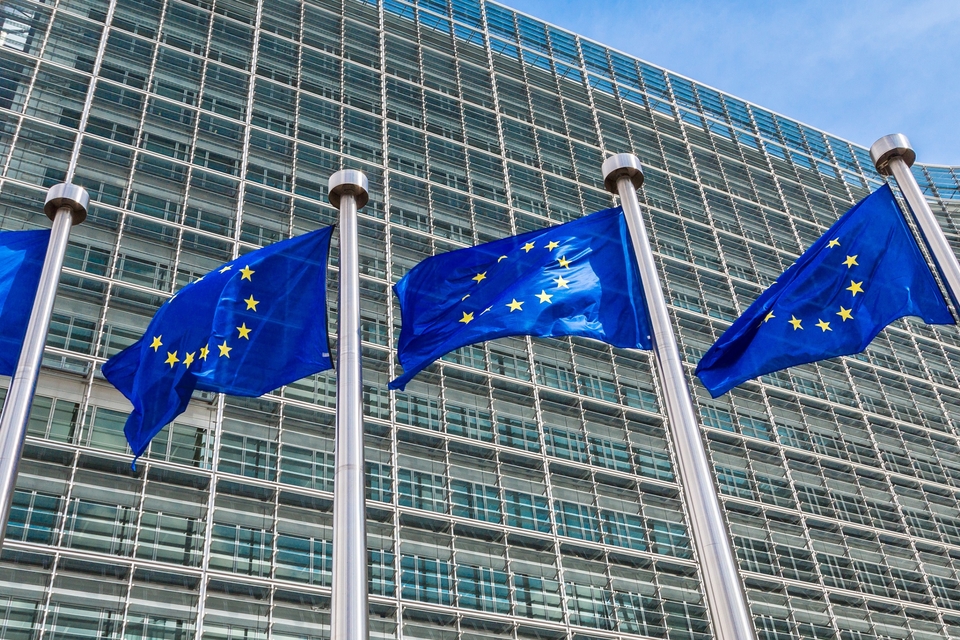African Union
The African Union's Continental AI Strategy sets the stage for a unified approach to AI governance across the continent.

Artificial intelligence (AI) has made enormous strides in recent years and has increasingly moved into the public consciousness.
Subscribe
We encourage you to subscribe to receive AI-related updates.
Explore Trendscape Our take on the interconnected global trends that are shaping the business climate for our clients.
Increases in computational power, coupled with advances in machine learning, have fueled the rapid rise of AI. This has brought enormous opportunities, as new AI applications have given rise to new ways of doing business. It has also brought potential risks, from unintended impacts on individuals (e.g., AI errors harming an individual's credit score or public reputation) to the risk of misuse of AI by malicious third parties (e.g., by manipulating AI systems to produce inaccurate or misleading output, or by using AI to create deepfakes).
Governments and regulatory bodies around the world have had to act quickly to try to ensure that their regulatory frameworks do not become obsolete. In addition, international organizations such as the G7, the UN, the Council of Europe and the OECD have responded to this technological shift by issuing their own AI frameworks. But they are all scrambling to stay abreast of technological developments, and already there are signs that emerging efforts to regulate AI will struggle to keep pace. In an effort to introduce some degree of international consensus, the UK government organized the first global AI Safety Summit in November 2023, with the aim of encouraging the safe and responsible development of AI around the world. The EU is also implementing the first comprehensive horizontal legal framework for the regulation of AI systems across EU Member States (the EU AI Act is addressed in more detail here: AI watch: Global regulatory tracker - European Union, and you can read our EU AI Act Handbook here).
Most jurisdictions have sought to strike a balance between encouraging AI innovation and investment, while at the same time attempting to create rules to protect against possible harms. However, jurisdictions around the world have taken substantially different approaches to achieving these goals, which has in turn increased the risk that businesses face from a fragmented and inconsistent AI regulatory environment. Nevertheless, certain trends are becoming clearer at this stage:
Businesses in almost all sectors need to keep a close eye on these developments to ensure that they are aware of the AI regulations and forthcoming trends, in order to identify new opportunities and new potential business risks. But even at this early stage, the inconsistent approaches each jurisdiction has taken to the core questions of how to regulate AI is clear. As a result, it appears that international businesses may face substantially different AI regulatory compliance challenges in different parts of the world. To that end, this AI Tracker is designed to provide businesses with an understanding of the state of play of AI regulations in the core markets in which they operate. It provides analysis of the approach that each jurisdiction has taken to AI regulation and provides helpful commentary on the likely direction of travel.
Because global AI regulations remain in a constant state of flux, this AI Tracker will develop over time, adding updates and new jurisdictions when appropriate. Stay tuned, as we continue to provide insights to help businesses navigate these ever-evolving issues.
The African Union's Continental AI Strategy sets the stage for a unified approach to AI governance across the continent.

Voluntary AI Ethics Principles guide responsible AI development in Australia, with potential reforms under consideration.

The enactment of Brazil's proposed AI Regulation remains uncertain with compliance requirements pending review.

AIDA expected to regulate AI at the federal level in Canada but provincial legislatures have yet to be introduced.

The Interim AI Measures is China's first specific, administrative regulation on the management of generative AI services.

Despite congressional activity on AI in Colombia, regulation remains unclear and uncertain.

The Council of Europe is developing a new Convention on AI to safeguard human rights, democracy, and the rule of law in the digital space covering governance, accountability and risk assessment.

The successful implementation of the EU AI Act into national law is the primary focus for the Czech Republic, with its National AI Strategy being the main policy document.

The EU introduces the pioneering EU AI Act, aiming to become a global hub for human-centric, trustworthy AI.

France actively participates in international efforts and proposes sector-specific laws.

The G7's AI regulations mandate Member States' compliance with international human rights law and relevant international frameworks.

Germany evaluates AI-specific legislation needs and actively engages in international initiatives.

Hong Kong lacks comprehensive AI legislative framework but is developing sector-specific guidelines and regulations, and investing in AI.

National frameworks inform India’s approach to AI regulation, with sector-specific initiatives in finance and health sectors.

Israel promotes responsible AI innovation through policy and sector-specific guidelines to address core issues and ethical principles.


Japan adopts a soft law approach to AI governance but lawmakers advance proposal for a hard law approach for certain harms.

Kenya's National AI Strategy and Code of Practice expected to set foundation of AI regulation once finalized.

Nigeria's draft National AI Policy underway and will pave the way for a comprehensive national AI strategy.

Position paper informs Norwegian approach to AI, with sector-specific legislative amendments to regulate developments in AI.

The OECD's AI recommendations encourage Member States to uphold principles of trustworthy AI.

Saudi Arabia is yet to enact AI Regulations, relying on guidelines to establish practice standards and general principles.

Singapore's AI frameworks guide AI ethical and governance principles, with existing sector-specific regulations addressing AI risks.

South Africa is yet to announce any AI regulation proposals but is in the process of obtaining inputs for a draft National AI plan.

South Korea's AI Act has been promulgated as the fundamental body of law governing AI.

Spain creates Europe's first AI supervisory agency and actively participates in EU AI Act negotiations.

Switzerland's National AI Strategy sets out guidelines for the use of AI, and aims to finalize an AI regulatory proposal in 2025.

Draft laws and guidelines are under consideration in Taiwan, with sector-specific initiatives already in place.

Turkey has published multiple guidelines on the use of AI in various sectors, with a bill for AI regulation now in the legislative process.

Mainland UAE has published an array of decrees and guidelines regarding regulation of AI, while the ADGM and DIFC free zones each rely on amendments to existing data protection laws to regulate AI.

The UK prioritizes a flexible framework over comprehensive regulation and emphasizes sector-specific laws.

The UN's AI resolutions encourage Member States to adopt national rules to establish safe, secure and trustworthy AI systems and create forums to advance global cooperation, scientific understanding, and share best practices.

The US relies on existing federal laws and guidelines to regulate AI but aims to introduce AI legislation and a federal regulation authority.


The US relies on existing federal laws and guidelines to regulate AI but aims to introduce AI legislation and a federal regulation authority. Until then, developers and deployers of AI systems will operate in an increasing patchwork of state and local laws, underscoring challenges to ensure compliance.
Currently, there is no comprehensive federal legislation or regulations in the US that regulate the development of AI or specifically prohibit or restrict their use. President Trump has signaled a permissive approach to AI regulation, issuing an Executive Order for Removing Barriers to American Leadership in AI ("Removing Barriers EO") in January 2025, that rescinds President Biden's Executive Order for the Safe, Secure, and Trustworthy Development and Use of AI ("Biden EO").1 The Removing Barriers EO calls for federal departments and agencies to revise or rescind all policies, directives, regulations, and other actions taken by the Biden administration that are "inconsistent" with "enhanc[ing] America's global AI dominance." Many policies were already in place from the Biden EO and it remains to be seen what the extent of the changes will be.
In July 2025, the Trump administration published the America's AI Action Plan2 ("the Plan"), which identifies more than 90 federal policy actions, with an aim to secure US AI leadership in artificial intelligence and place innovation at the core of US AI policy. This approach contrasts with the more risk-focused approaches adopted by the European Union and certain state-level initiatives such as the Colorado AI Act. While the Plan prescribes various proposed incentives to businesses, the practical impact in states with existing or emerging AI regulatory frameworks remains uncertain.
The US Congress has been considering numerous AI bills covering a wide range of issues. It is unclear if the Republican-held Congress will use this as an opportunity to enact AI legislation or focus on other priorities. That said, many of the proposed bills emphasize the development of voluntary guidelines and best practices for AI systems, reflecting a cautious approach to regulation aimed at fostering innovation without imposing strict mandates. This approach is influenced by concerns over stifling technological progress and maintaining competitiveness, particularly against countries like China (which produces approximately four STEM graduates for every STEM graduate in the US).
Existing US federal laws have limited application to AI. A non-exhaustive list of key examples includes:
The AI Action Plan has a deregulation and pro-innovation agenda. It recommends that the Office of Management and Budget work with federal agencies to assess states' AI regulatory environments when making federal funding decisions, ensuring resources are not provided to states with restrictive legal frameworks. However, it is unclear how much impact this recommendation will have or what it will look like in practice. The AI Action Plan also emphasizes the Trump administration's key objective of enhancing the United States' AI infrastructure for geopolitical leadership while protecting against foreign adversary threats. Central to this strategy is the goal of exporting the full AI technology stack, including hardware, models, software and applications to countries willing to join a proposed "AI Alliance." While this would create opportunities for US businesses to expand into new markets, businesses may also need to reevaluate their supply chains, partnership structures and compliance programs to avoid inadvertently granting adversaries or entities of concern access to controlled AI technologies. Another notable aspect of the AI Action Plan (also set forth in the Executive Order "Preventing Woke AI in the Federal Government")6 is the update to the federal procurement guidelines to ensure that only "unbiased" large language models (i.e., considered free from "ideological dogmas such as DEI" and other "partisan or ideological judgments)" be eligible for government use. Therefore, AI companies engaging in government contracting, or whose products may otherwise be evaluated under the forthcoming guidelines on ideological neutrality, should closely monitor developments in this area.
The White House Blueprint for an AI Bill of Rights, issued under Biden, asserts guidance around equitable access and use of AI systems.7 The AI Bill of Rights provides five principles and associated practices to help guide the design, use and deployment of "automated systems" including safe and effective systems; algorithmic discrimination and protection; data privacy; notice and explanation; and human alternatives, consideration and fallbacks. While the Removing Barriers EO did not specifically revoke the AI Bill of Rights, the Trump Administration may be less likely to pursue the development of principles set out in the AI Bill of Rights, to the extent these principles are perceived as "inconsistent" with "enhanc[ing] America's global AI dominance." Nevertheless, AI developers may keep these principles in mind when designing AI systems.
Several leading AI companies – including Adobe, Amazon, Anthropic, Cohere, Google, IBM, Inflection, Meta, Microsoft, Nvidia, Open AI, Palantir, Salesforce, Scale AI, Stability AI – have voluntarily committed to "help move toward safe, secure, and transparent development of AI technology."8 These companies committed to internal/external security testing of AI systems before release, sharing information on managing AI risks and investing in safeguards.
The Federal Communications Commission issued a declaratory ruling stating that the restrictions on the use of "artificial or pre-recorded voice" messages in the 1990s era Telephone Consumer Protection Act include AI technologies that generate human voices, demonstrating that regulatory agencies will apply existing law to AI.9
The Federal Trade Commission (FTC), under the Biden administration, had signaled an aggressive approach to use its existing authority to regulate AI.)10 The FTC issued a warning to market participants that it may violate the FTC Act to use AI tools that have discriminatory impacts, make claims about AI that are not substantiated, or to deploy AI before taking steps to assess and mitigate risks.11 The FTC has already taken enforcement action against various companies that have deceived or otherwise harmed consumers through AI.12 As discussed below, the FTC has notably banned Rite Aid from using AI facial recognition technology without reasonable safeguards.13 That said, the AI Action Plan directs the FTC to review, and, where appropriate, seek to modify or set aside investigations, orders, consent decrees and injunctions from prior administration that may unduly burden AI innovation. Therefore, it remains to be seen how aggressive the FTC will be on AI under the Trump administration.
On September 12, 2023, the US Senate held public hearings regarding AI,14 which laid out potential forthcoming AI regulations. Possible legislation could include requiring licensing and creating a new federal regulatory agency. Additionally, US lawmakers held closed-door listening sessions with AI developers, technology leaders and civil society groups on September 13, 2023 in a continued push to understand and address AI.15
There are several proposed federal laws related to AI. A non-exhaustive list of key examples includes:
SANDBOX Act16, which seeks to establish a federal "regulatory sandbox" for AI developers to apply for waivers or modifications on compliance with federal regulations in order to test, experiment with, or temporarily offer AI products and services.
The SAFE Innovation AI Framework,17 which is a bipartisan set of guidelines for AI developers, companies and policymakers. This is not a law, but rather a set of principles to encourage federal law-making on AI.
The REAL Political Advertisements Act,18 which aims to regulate generative AI in political advertisements.
The Stop Spying Bosses Act,19 which aims to regulate employers surveilling employees with machine learning and AI techniques.
The Draft No FAKES Act,20 which would protect voice and visual likenesses of individuals from unauthorized recreations from Generative AI.
The AI Research Innovation and Accountability Act,21 which calls for greater transparency, accountability and security in AI, while establishing a framework for AI innovation. It would create an enforceable testing and evaluation standard for high-risk AI systems and require companies that use high-risk AI systems to produce transparency reports. It also empowers the National Institute of Standards and Technology to issue sector-specific recommendations to regulate them.
The American Privacy Rights Act, which would create a comprehensive consumer privacy framework.22 The draft bill includes provisions on algorithms, including a right to opt-out of covered algorithms used to make or facilitate consequential decisions.
House Republicans had included a provision in the "One Big Beautiful Bill Act" (enacted July 4, 2025) proposing a 10-year moratorium on state and local AI regulations. This move purportedly aimed to establish uniform federal oversight but sparked bipartisan opposition from many state lawmakers concerned about losing the ability to address AI-related harm locally. Ultimately, on July 1, 2025, the Senate voted 99-1 to remove the proposed moratorium – there was broad agreement among lawmakers and consumer protection advocates that the provision was unreasonably vague and likely to spur a wave of litigation about its scope and impact. Various lawmakers also expressed concerns that the moratorium would undermine efforts to regulate AI for purposes such as improving children's online safety and preventing deceptive trade practices.
Absent federal legislation, we can expect to see more state laws, and state legislatures have already introduced a substantial number of bills aimed at regulating AI, notably:
Senate Bill 942: California AI Transparency Act (effective January 1, 2026):27 mandates that "Covered Providers" (AI systems that are publicly accessible within California with more than one million monthly visitors or users) implement comprehensive measures to disclose when content has been generated or modified by AI. This Act outlines requirements for AI detection tools and content disclosures, and establishes licensing practices to ensure that only compliant AI systems are permitted for public use. Covered Providers that violate the Act are liable for a penalty of US$5,000 per violation per day.
Note: State legislatures in Washington and Virginia are currently considering similar AI transparency bills.
As for international commitments, on September 5, 2024, the United States joined Andorra, Georgia, Iceland, Norway, the Republic of Moldova, San Marino, the United Kingdom, Israel, and the European Union to sign the Council of Europe's Framework Convention36 on AI. The treaty will enter into force on the first day of the month following three months after five signatories, including at least three Council of Europe Member States, have ratified it. Countries from all over the world will be eligible to join and commit to its provisions. However, given changes to US AI policy under President Trump, the US may withdraw from the Framework Convention on AI or otherwise decline to adhere to the Framework.
Existing legislation has been the primary way in which the US regulates AI as established law, including privacy and intellectual property laws, which are generally applicable to AI technologies.
Notably, in April 2023, the Federal Trade Commission, Equal Employment Opportunity Commission, Consumer Financial Protection Bureau, and Department of Justice issued a joint statement noting that "existing legal authorities apply to the use of automated systems and innovative new technologies."37 As cited above, in February 2024, the Federal Communications Commission applied restrictions in the Telephone Consumer Protection Act on AI-generated voices.
Several states have enacted comprehensive privacy legislation that can also regulate AI. A non-exhaustive list of notable state legislation includes:
There is no single definition of AI.
The National Artificial Intelligence Initiative and Removing Barriers EO define AI as "a machine-based system that can, for a given set of human-defined objectives, make predictions, recommendations, or decisions influencing real or virtual environments. Artificial intelligence systems use machine- and human-based inputs to perceive real and virtual environments; abstract such perceptions into models through analysis in an automated manner; and use model inference to formulate options for information or action."41
Many state privacy bills have different definitions of automated decision-making technology or "profiling":
As noted above, there are currently no comprehensive federal laws that have been enacted to specifically regulate AI. Accordingly, there is no specific territorial scope of federal legislation. However, many existing statutes regulate activities in which AI can be used, and those federal statutes typically apply nationally and, in some cases, extra-territorially. State legislation regulating AI generally has extra-territorial effect as its application typically extends to entities that target its residents from within or outside the state.
As noted above, there are currently no comprehensive federal laws that directly regulate AI. Accordingly, there is no specific federal sectoral scope at this stage. Nevertheless, there are certain sector-specific frameworks that have been implemented in the US to regulate the use of AI. A non-exhaustive list of key examples includes:
As noted above, there is currently no comprehensive federal legislation in the US that directly regulates AI. Accordingly, there are currently no specific or unique federal obligations imposed on developers, users, operators and/or deployers of AI systems. However, developers, users, operators and deployers of AI systems should anticipate that existing law will apply to any regulated activity that uses AI, and consult legal counsel about the potential liabilities that may arise. While potentially novel, the use of AI does not per se provide a shield from the application of existing law.
As noted above, there is currently no comprehensive legislation in the US that directly regulates AI. However, proposed legislation at the federal and state level generally seeks to address the following issues:
As noted above, there is currently no comprehensive legislation in the US that directly regulates AI. AI is also not generally classified according to risk in the relevant frameworks and principles.
Currently, there is no AI-specific federal regulator in the US. However, in April 2023, the Federal Trade Commission, Equal Employment Opportunity Commission, Consumer Financial Protection Bureau and Department of Justice issued a joint statement clarifying that their authority applies to "software and algorithmic processes, including AI."50
Similarly, state regulators that regulate privacy legislation likely also have the authority to regulate AI vis-à-vis existing privacy provisions. The FTC has been active in this area, and we can expect to see more from them going forward; see discussion of Rite Aid below.
As noted above, there are currently no comprehensive federal laws or regulations in the US that have been enacted specifically to regulate AI. As such, enforcement and penalties relating to the creation, dissemination and/or use of AI are governed by application of existing law to situations involving AI, through regulatory or judicial application of non-AI-specific federal and state statutes or AI-specific state privacy legislation.
In addition, the Federal Trade Commission has evoked an interest in and focus on regulating AI through enforcement. On December 19, 2023, the FTC settled a significant action focused on artificial intelligence bias and discrimination against Rite Aid regarding the company's use of facial recognition technology for retail theft deterrence. This illustrative case provides guidance on the FTC's enforcement on AI systems. For example, the proposed consent order51 between Rite Aid and the FTC:
With respect to Colorado AI Act, the Colorado Attorney General has rule-making authority to implement, and exclusive authority to enforce, the requirements of the Act.52 A developer or deployer who violates the Act is deemed to engage in unfair or deceptive trade practices.
Enforcement mechanisms and penalties vary under the different California AI bills. Bills that specifically provide for enforcement include:
Further insights from White & Case:
Nick Reem and John Oltean (Associates, White & Case, Los Angeles) contributed to this publication.
1 See Removing Barriers to American Leadership in Artificial Intelligence
2 See White House, "Winning the Race: America's AI Action Plan
3 See Federal Aviation Administration Reauthorization Act
4 See National Defense Authorization Act
5 See National AI Initiative Act of 2020
6 See Preventing Woke AI in the Federal Government
7 See White House fact sheet
8 See Voluntary Commitments from Leading Artificial Intelligence Companies
9 See FCC declaratory ruling
10 See EEOC-CRT-FTC-CFPB-AI-Joint-Statement (final)
11 See Keep your AI claims in check
12 See FTC Announces Crackdown on Deceptive AI Claims and Schemes
13 See Rite Aid Banned from Using AI Facial Recognition
14 See The Need for Transparency in Artificial Intelligence
15 See IAPP article
16 See Strengthening Artificial Intelligence Normalization and Diffusion by Oversight and eXperimentation Act ("SANDBOX Act")
17 See SAFE Innovation AI Framework
18 See REAL Political Advertisements Act
19 See Stop Spying Bosses Act
20 See NO FAKES Act
21 See AI Research, Innovation, and Accountability Act
22 See American Privacy Rights Act
23 See Governor Polis Calls Special Session to Address Budget Hole Created by Federal Bill
24 See Defending Democracy from Deepfake Deception Act
25 See Use of likeness: digital replica
26 See Tennessee Code
27 See California AI Transparency Act
28 See Bill Text - AB-2013 Generative artificial intelligence: training data transparency
29 See Bill Text - AB-3030 Health care services: artificial intelligence
30 See Bill Text - AB-2602 Contracts against public policy: personal or professional services: digital replicas
31 See Generative Artificial Intelligence Accountability Act
31 See Utah S.B. 149 Artificial Amendments
32 See CPPA, Modified Text of Proposed Regulations (CCPA Updates, Cyber, Risk, ADMT, and Insurance Regulations)
33 See Utah S.B. 149 Artificial Amendments
34 See An Act concerning AI, automated decision-making and personal data privacy
35 See An Act relating to the creation of the AI council
36 See Convention text here
37 See EEOC-CRT-FTC-CFPB-AI-Joint-Statement
38 See California Consumer Privacy Act of 2018
39 See 740 ILCS 14/ Biometric Information Privacy Act
40 See THALER v. PERLMUTTER
41 See here
42 See An Act relating to the creation of the AI council
43 See An Act concerning personal data privacy and online monitoring
44 See California Consumer Privacy Act of 2018
45 See California Consumer Privacy Act of 2018: personal information
46 See Consumer privacy: sensitive personal information: neural data
47 See Model - Innovation, Cybersecurity, and Technology (H) Working Group
48 See The New York City Council File
49 See DCWP - Automated Employment Decision Tools (AEDT)
50 See Joint Statement
51 See Stipulated Order For Permanent Injunction and Other Relief
52 See Colorado AI Act
White & Case means the international legal practice comprising White & Case LLP, a New York State registered limited liability partnership, White & Case LLP, a limited liability partnership incorporated under English law and all other affiliated partnerships, companies and entities.
This article is prepared for the general information of interested persons. It is not, and does not attempt to be, comprehensive in nature. Due to the general nature of its content, it should not be regarded as legal advice.
© 2025 White & Case LLP